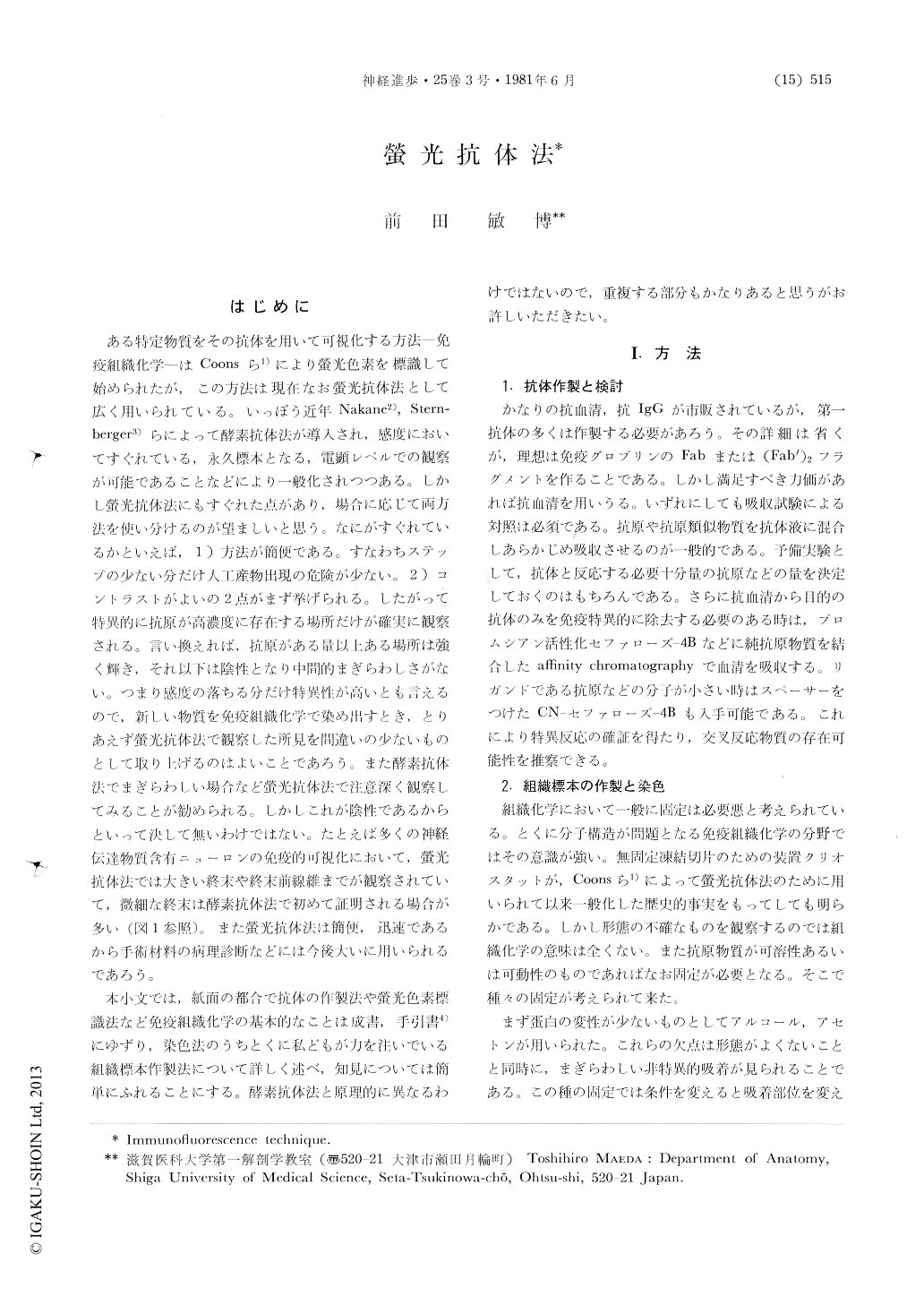Japanese
English
- 有料閲覧
- Abstract 文献概要
- 1ページ目 Look Inside
はじめに ある特定物質をその抗体を用いて可視化する方法―免疫組織化学―はCoonsら1)により螢光色素を標識して始められたが,この方法は現在なお螢光抗体法として広く用いられている。いっぽう近年Nakane2),Sternberger3)らによって酵素抗体法が導入され,感度においてすぐれている,永久標本となる,電顕レベルでの観察が可能であることなどにより一般化されつつある。しかし螢光抗体法にもすぐれた点があり,場合に応じて両方法を使い分けるのが望ましいと思う。なにがすぐれているかといえば,1)方法が簡便である。すなわちステップの少ない分だけ人工産物出現の危険が少ない。2)コントラストがよいの2点がまず挙げられる。したがって特異的に抗原が高濃度に存在する場所だけが確実に観察される。言い換えれば,抗原がある量以上ある場所は強く輝き,それ以下は陰性となり中間的まぎらわしさがない。つまり感度の落ちる分だけ特異性が高いとも言えるので,新しい物質を免疫組織化学で染め出すとき,とりあえず螢光抗体法で観察した所見を間違いの少ないものとして取り上げるのはよいことであろう。また酵素抗体法でまぎらわしい場合など螢光抗体法て注意深く観察してみることが勧められる。しかしこれが陰性であるからといって決して無いわけではない。
Immunohistochemistry has become a rather routine method through this decade. There are, however, still some technical problems which can not be overlooked. A main bottleneck of this histochemistry lies in tissue preparation procedures which may affect morphological quality, replacement of tissue antigens, penetration of antibodies into tissue antigenic targets and preservation of these antigenisities. In this paper, fixation and washing procedures are taken up in particular to be brought into focus.

Copyright © 1981, Igaku-Shoin Ltd. All rights reserved.


